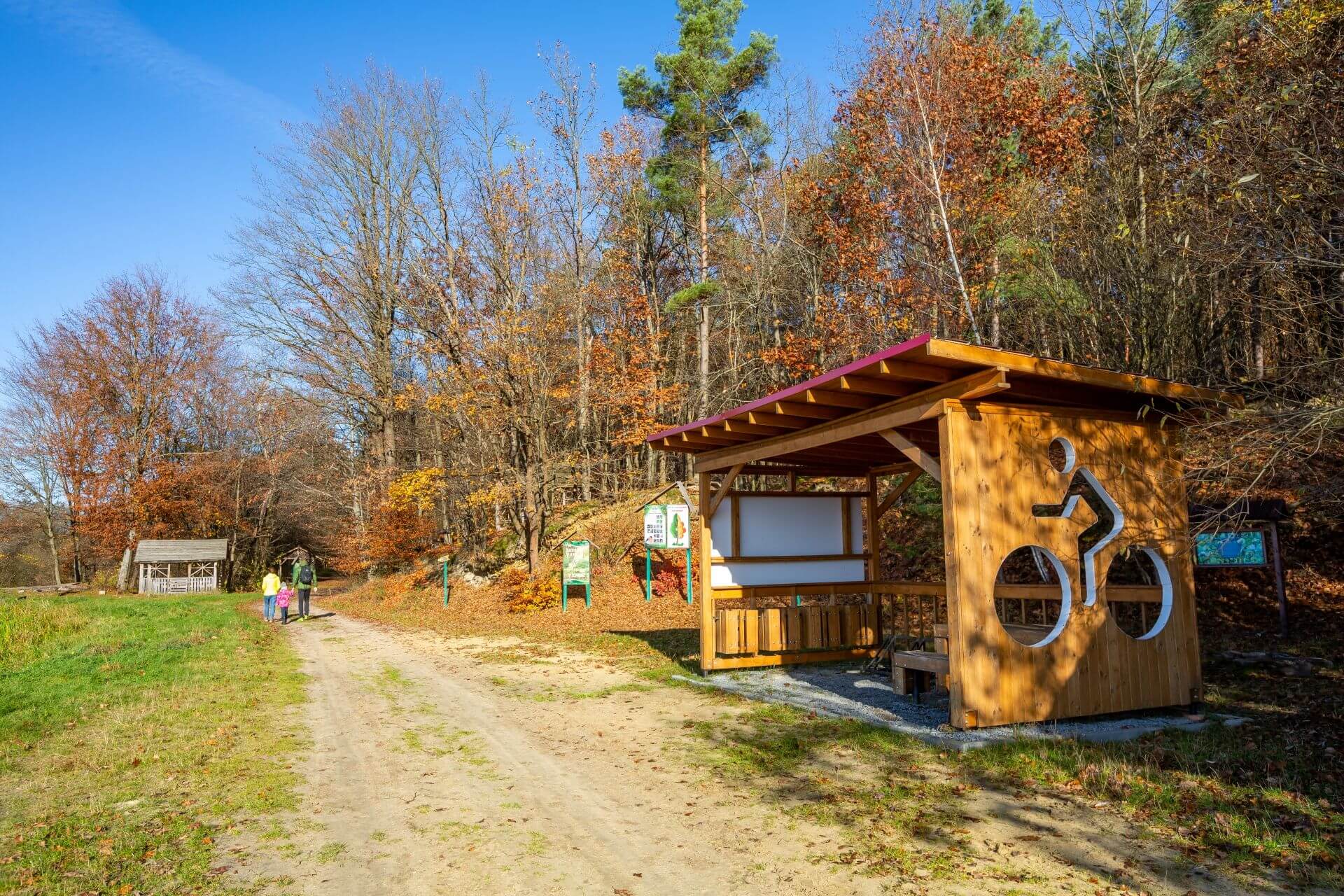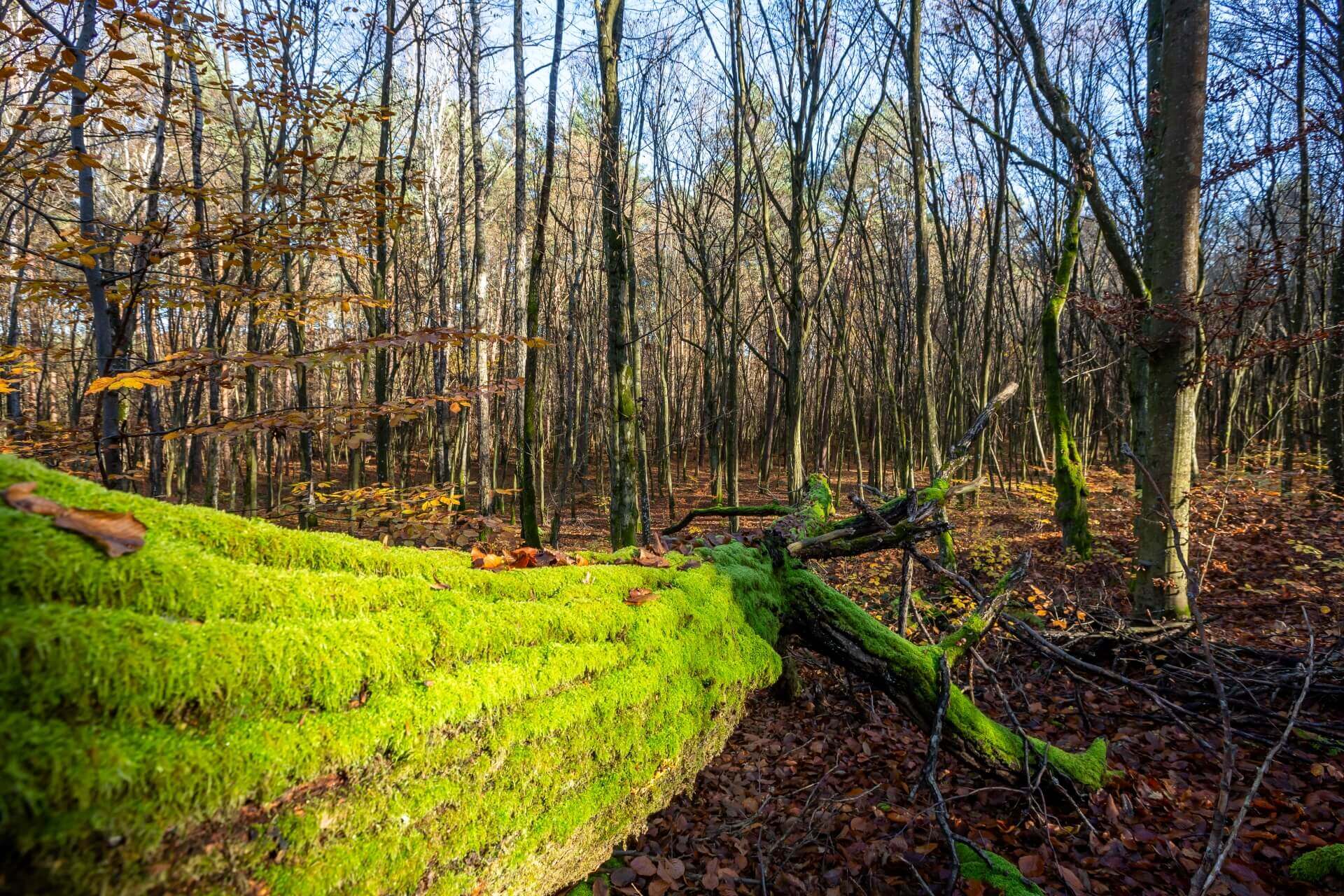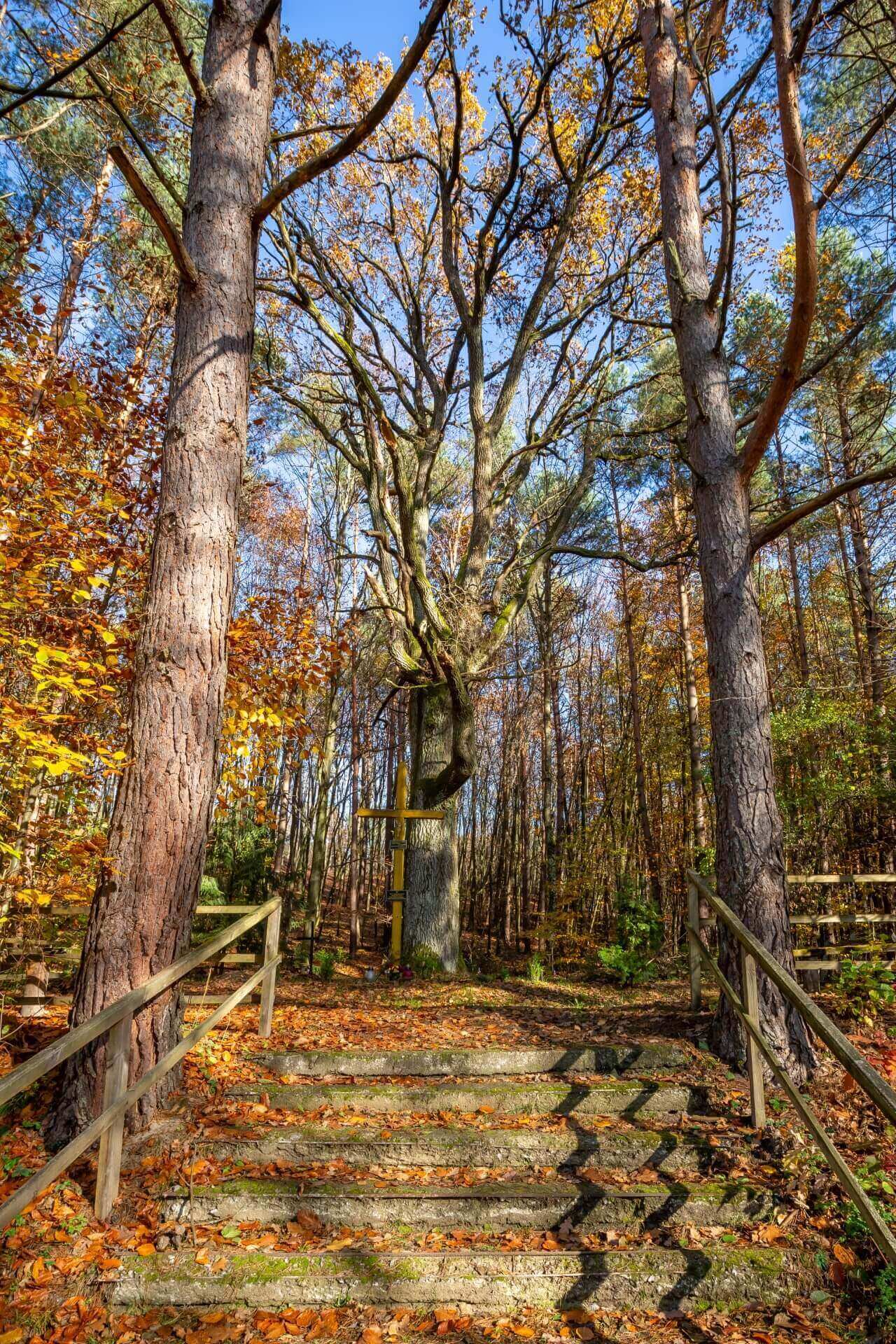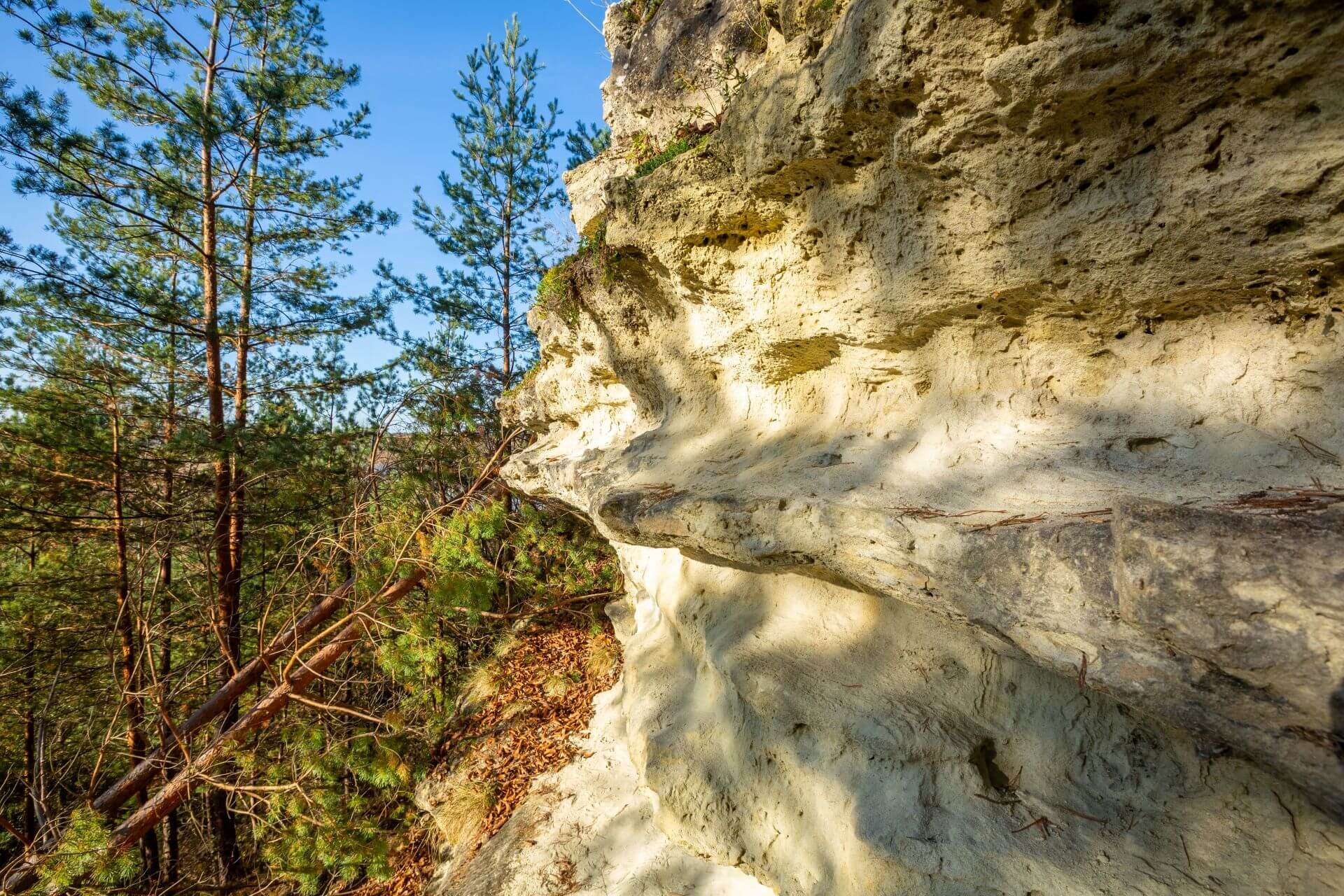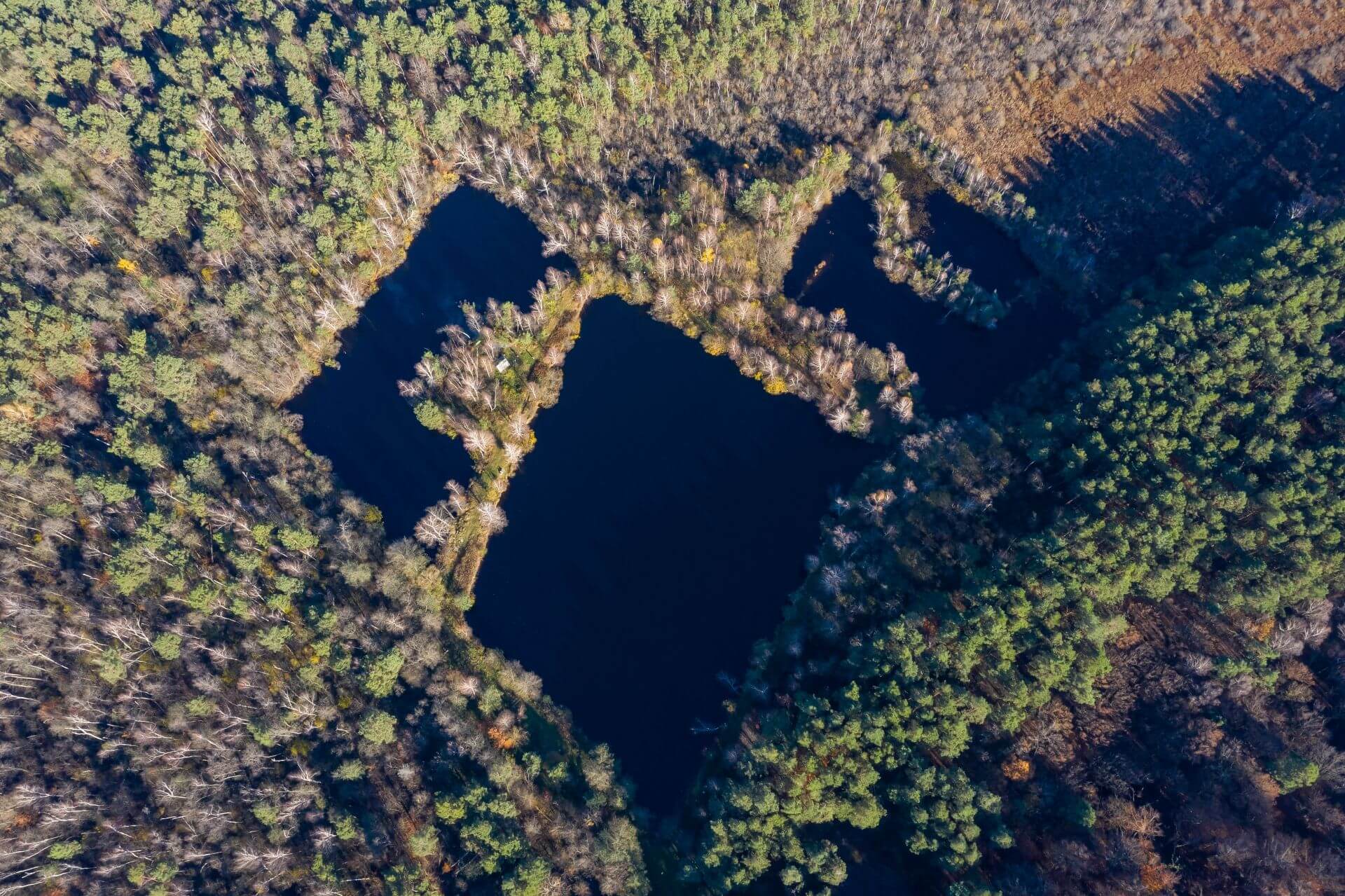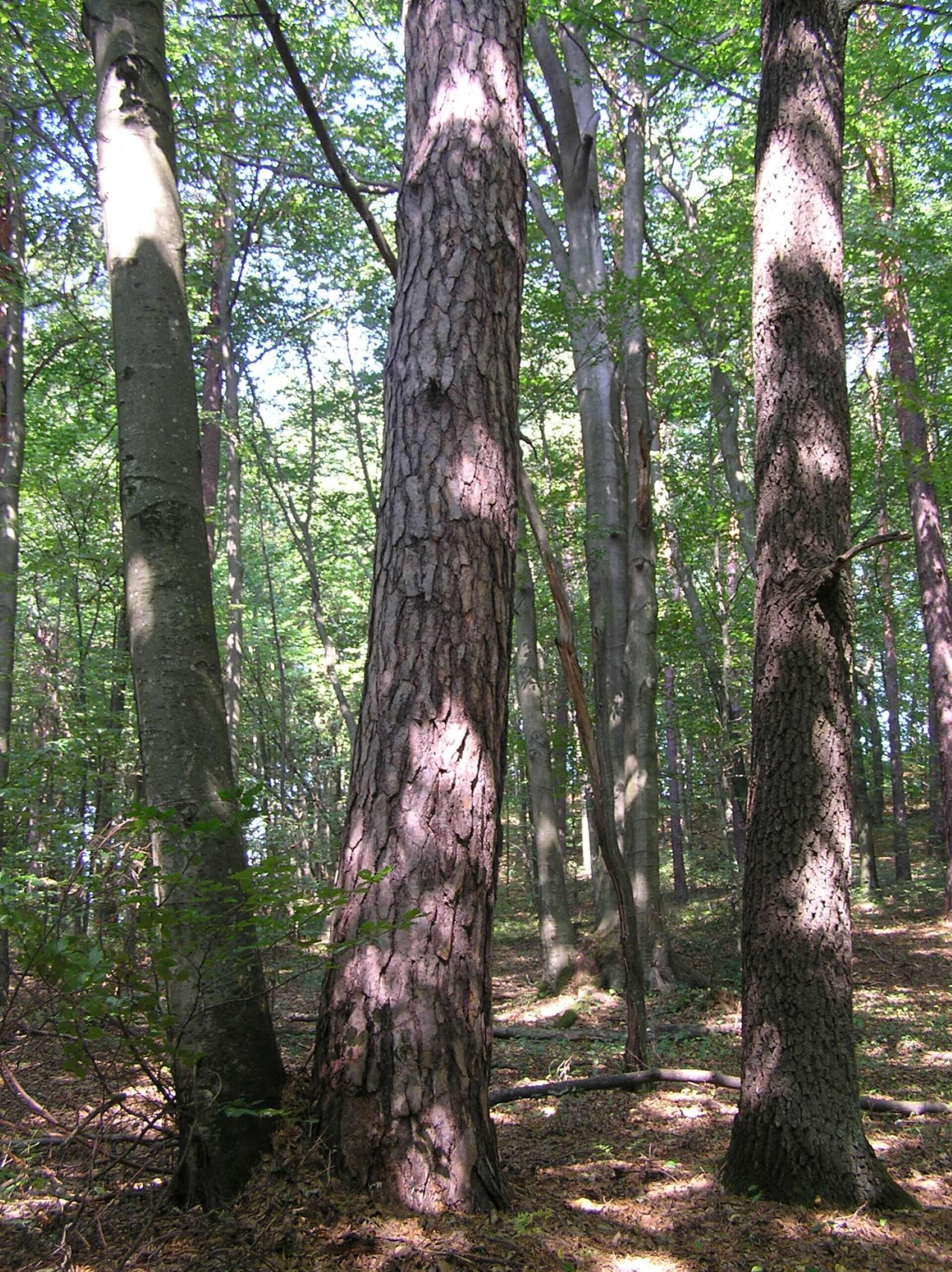“Ivan Franko’s Path”
-
Difficulty
Easy -
Length
1.1 km -
Duration
up to 1 hour
-
The route begins at Lelekhivka village.
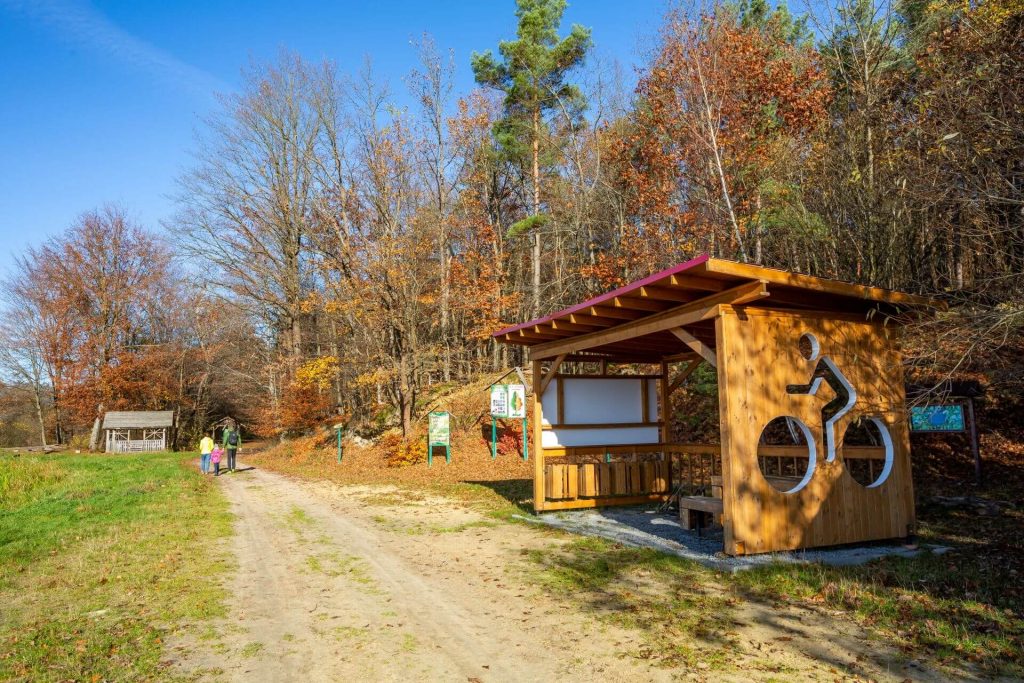
The route starts near the Lelekhivka village and quarry with exposure of deltaic sands of the Neogene period, where fossil trees are found.
In the same quarry, you can see the nest of a Common kingfisher, which is also called a flying gem. This small bird of bright blue color feeds on fish and builds nests in burrows. It digs them in sandy cliffs on rivers and other bodies of water.
-
Ant-hills
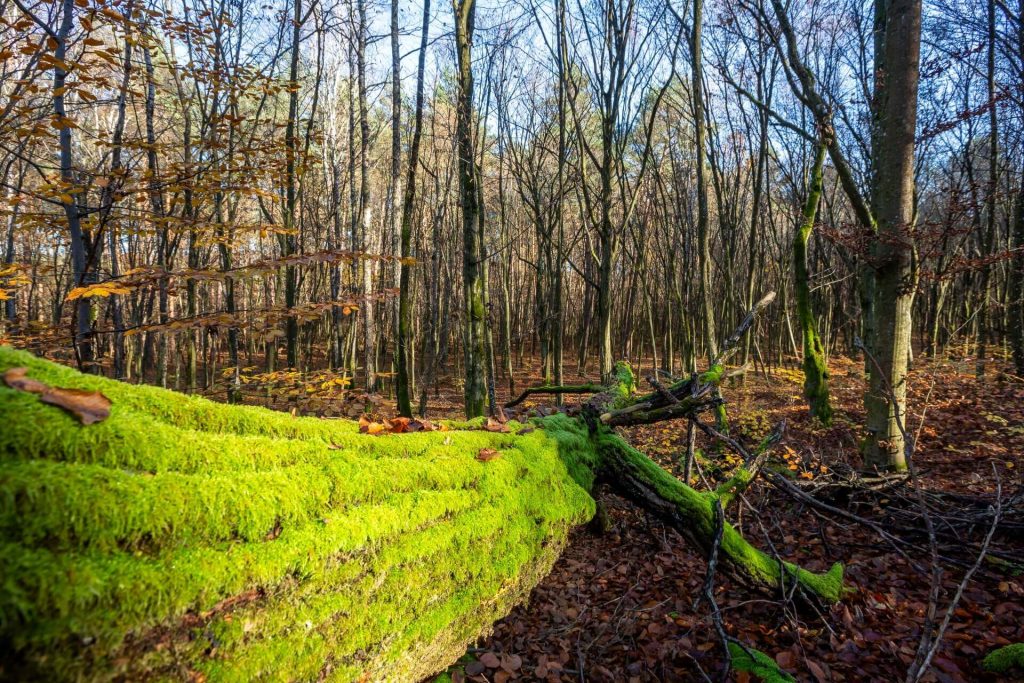
A number of anthills stretch along the path and along the forest border. These mounds are constantly increasing due to the pine needles, pieces of bark, twigs, grass. With the help of an anthill, you can determine the sides of the world: on the south side of the slope is gentle, on the north – steeper. It is estimated that each average ant nest kills up to 20,000 insects daily, and up to 20 million during the summer. In fact, one anthill controls almost a hectare of forest.
-
Age-old oak
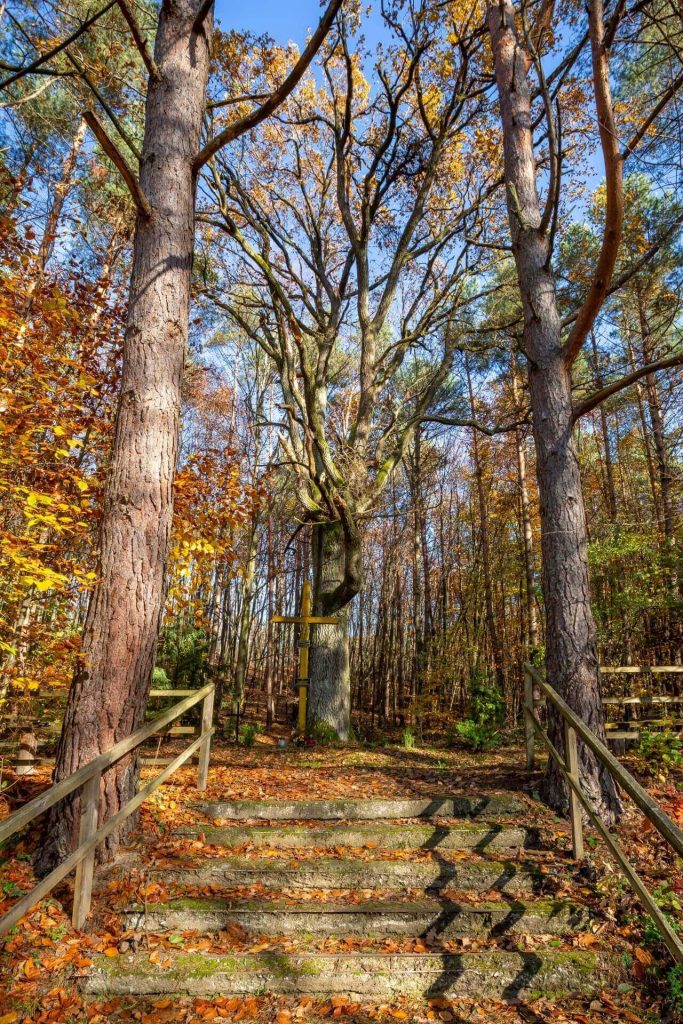
Further along the route – you can see a huge sprawling age-old oak, a witness to two world wars. Near the oak, there is the burial place of the victims of the wars of 1914-1918 and 1939 – Ukrainians, Poles, Hungarians who died during the tragic battles.
-
White Rock tract
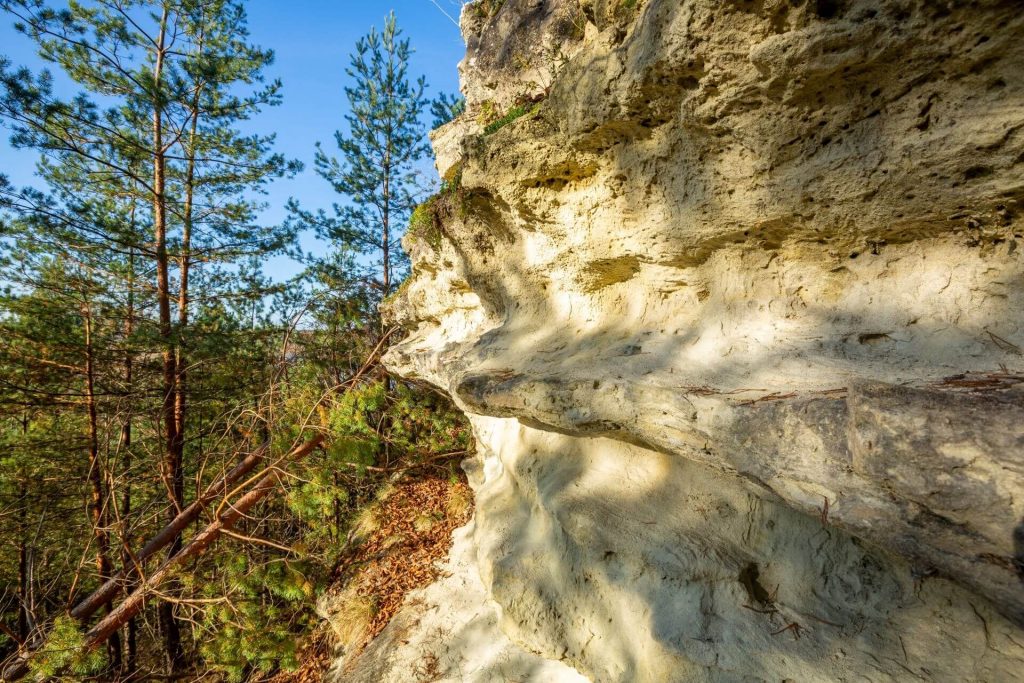
On the route, visitors are greeted by the steppe guest of Roztochia – the White Rock. It is a sand quarry composed of calcareous sandstones containing fossilized tubers of lithotamnian algae and ervil shells (ervil is a mollusk that lived in the warm Tortonian and Sarmatian seas millions of years ago).
The White Rock is a unique scientific object, located in the middle of the forest-steppe vegetation. On the slopes of the hill, you can often find snakes and agile lizards. Among the interesting flora representatives, you can see mountain onion, forest anemone, branched St Bernard’s-lily (regionally rare species), sunrose, and in wetlands at the mountain foot – grass-of-Parnassus and broad-leaved marsh orchid (an orchid, listed in the Red Book of Ukraine).
-
Black Lakes tract
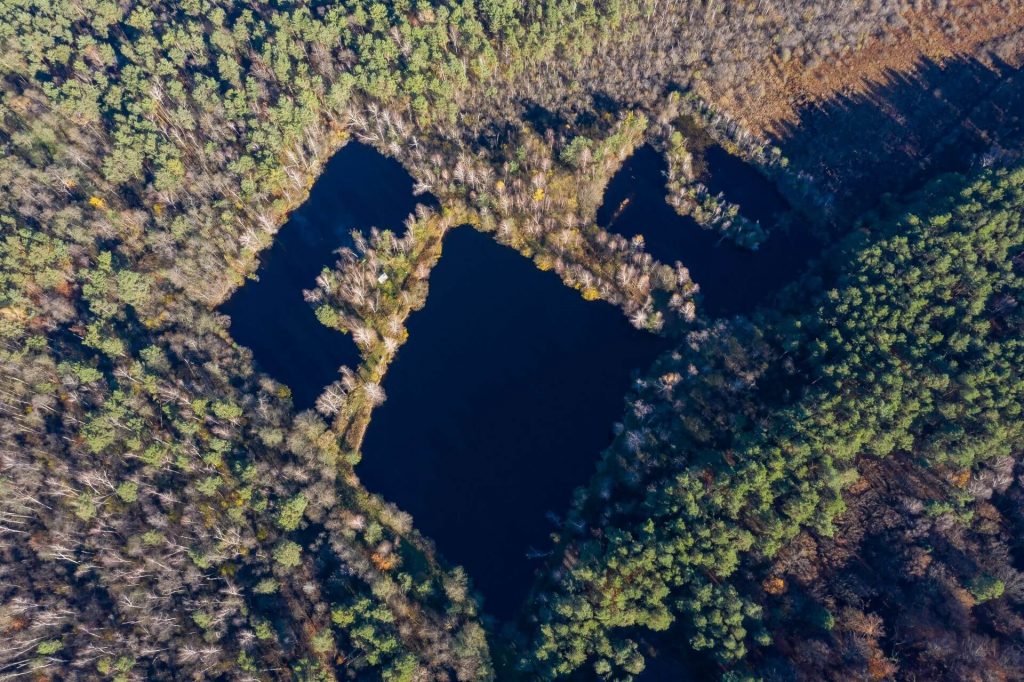
The route ends with a cascade of artificial The Black Lakes – a small paradise of Roztochia with three beautiful lakes, where the water is completely black. This is due to the peat bottom, which is lined with alder cones.
-
Pine-beech-oak forests
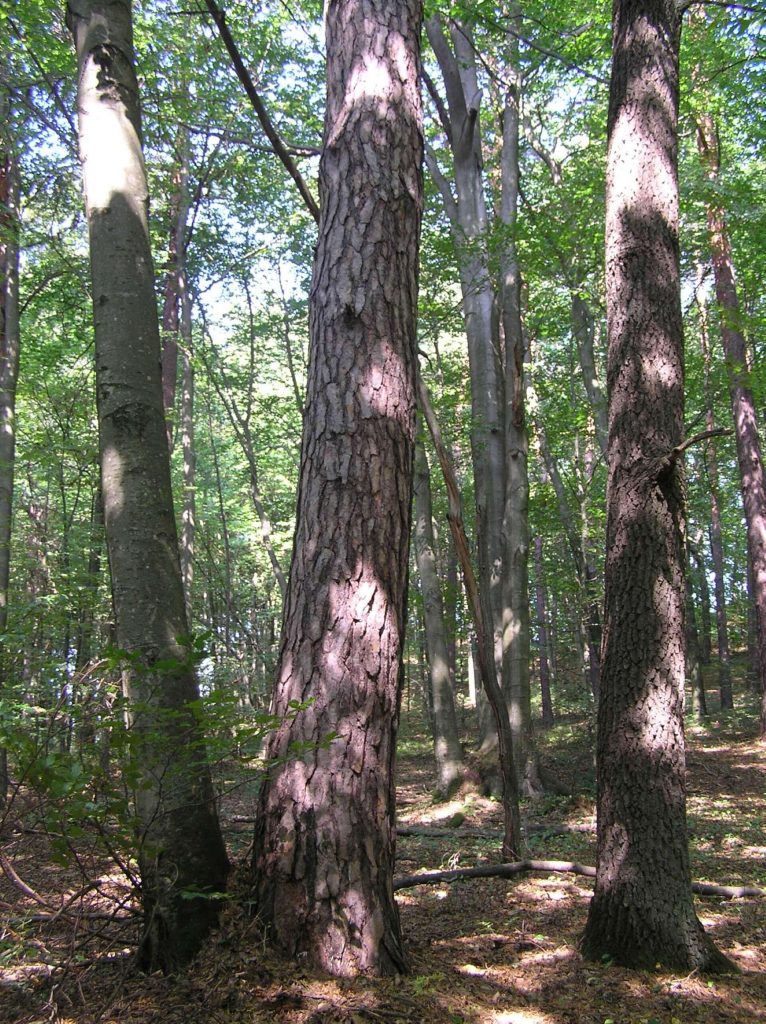
The peculiarity of Roztochia is also in the pine-beech and pine-beech-oak forests. They are unique for Ukraine, and here they grow sometimes with hornbeam admixtures. In Ukraine, these forests grow only in Roztochia and Crimea. Therefore, the return path of the ecological-educational route passes through the forest, where there is a floral combination of oak, beech, and pine.
For the convenience of tourists, the path leads to the meadow, where you can light a fire, hide from the rain or just sit and breathe the healing air of the pine forest and enjoy the surrounding beauty.
Deviation from the route.
Damage to natural objects.
Breeding hearths in places not designated for this purpose, smoking when passing through forests.
Felling and damage to trees plucking flowers, collecting medicinal plants.
Hunting for animals, destruction of their habitats.
Catching fish by any means.
Stay with firearms.
Territory littering, noise.

